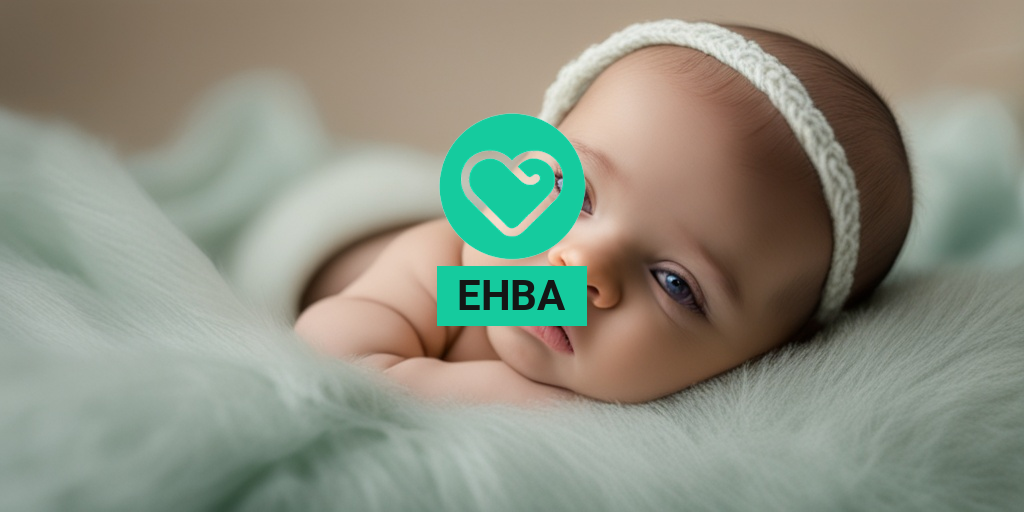What is EHBA?
EHBA, short for Extrahepatic Biliary Atresia, is a rare and complex congenital disorder that affects the liver and bile ducts in newborns. It’s a condition where the bile ducts outside the liver are blocked or narrowed, preventing bile from flowing properly. This can lead to a buildup of bile in the liver, causing damage and scarring over time.
Understanding the Bile Duct System
To understand EHBA, it’s essential to know how the bile duct system works. The liver produces bile, a digestive fluid that helps break down fats and absorbs fat-soluble vitamins. The bile ducts carry bile from the liver to the gallbladder, where it’s stored, and then to the small intestine, where it helps with digestion.
In a healthy individual, the bile ducts are open and functioning correctly, allowing bile to flow freely. However, in babies with EHBA, the bile ducts are either blocked or narrowed, disrupting the normal flow of bile. This can cause a range of symptoms, from mild to severe, and can lead to serious complications if left untreated.
EHBA Symptoms and Warning Signs
EHBA symptoms can vary in severity and may not be immediately apparent at birth. However, it’s essential to recognize the warning signs early on to ensure prompt medical attention. Some common symptoms of EHBA include:
- Jaundice: A yellowish discoloration of the skin and eyes due to the buildup of bilirubin in the blood.
- Dark Urine: Bile that’s not being excreted through the bile ducts can cause urine to appear dark or tea-colored.
- Fatigue: Babies with EHBA may appear lethargic or tired due to the buildup of toxins in the body.
- Poor Weight Gain: EHBA can lead to malnutrition and poor weight gain in infants.
- Vomiting: Babies with EHBA may experience vomiting, especially after feeding.
- Abdominal Distension: The abdomen may become swollen or distended due to the accumulation of bile.
If you suspect your baby is showing any of these symptoms, it’s crucial to consult with a healthcare professional for an accurate diagnosis and timely treatment. Early intervention can significantly improve the chances of a successful outcome.
Remember, EHBA is a complex condition that requires careful management and treatment. If you’re concerned about your baby’s health or have questions about EHBA, consider consulting with a healthcare expert or visiting a trusted resource like Yesil Health AI for evidence-based health answers.
👶💊

Causes and Risk Factors of EHBA
EHBA, or Extrahepatic Biliary Atresia, is a rare and complex congenital disorder that affects the bile ducts outside the liver. While the exact causes of EHBA are still not fully understood, research has identified several risk factors and potential causes that can contribute to the development of this condition.
Genetic Factors
Studies suggest that genetic mutations may play a role in the development of EHBA. Research has identified several genetic variants that may increase the risk of EHBA, including mutations in the ADD3 and GPC1 genes. However, more research is needed to fully understand the genetic basis of EHBA.
Infections and Environmental Factors
Some research suggests that certain infections, such as reovirus, may trigger the development of EHBA in susceptible individuals. Additionally, environmental factors, such as exposure to toxins or certain medications during pregnancy, may also contribute to the risk of EHBA.
Maternal and Fetal Factors
Maternal and fetal factors, such as maternal diabetes, hypertension, and fetal growth restriction, may also increase the risk of EHBA. Additionally, multiple pregnancies and advanced maternal age may also be associated with an increased risk of EHBA.
Other Potential Causes
Other potential causes of EHBA include viral infections, such as cytomegalovirus (CMV) and Epstein-Barr virus (EBV), as well as autoimmune disorders, such as autoimmune hepatitis. However, more research is needed to fully understand the role of these factors in the development of EHBA.
How to Diagnose EHBA
Diagnosing EHBA can be challenging, as the symptoms can be similar to those of other liver and bile duct disorders. However, a combination of clinical evaluation, laboratory tests, and imaging studies can help diagnose EHBA.
Clinical Evaluation
A thorough clinical evaluation is essential for diagnosing EHBA. This includes a physical examination, medical history, and review of symptoms, such as jaundice, dark urine, and light-colored stools.
Laboratory Tests
Laboratory tests, such as liver function tests (LFTs) and bilirubin levels, can help identify liver damage and bile duct obstruction. Additionally, genetic testing may be performed to identify genetic mutations associated with EHBA.
Imaging Studies
Imaging studies, such as ultrasound, CT scans, and MRCP (magnetic resonance cholangiopancreatography), can help visualize the bile ducts and liver, and identify any abnormalities or blockages.
Diagnostic Criteria
The diagnosis of EHBA is typically made based on a combination of clinical, laboratory, and imaging findings. The Triple Triangle Sign, which includes a triangular shape of the bile ducts on ultrasound, a triangular shape of the liver on CT scan, and a triangular shape of the bile ducts on MRCP, is a characteristic feature of EHBA.
Early diagnosis and treatment of EHBA are critical for improving outcomes and reducing the risk of complications. If you suspect that your child may have EHBA, it is essential to consult with a pediatrician or a specialist in pediatric gastroenterology or hepatology. 🏥

Treatment Options for EHBA
EHBA, or Extrahepatic Biliary Atresia, is a rare and complex condition that affects the liver and bile ducts in infants. While there is no cure for EHBA, there are various treatment options available to manage the condition and improve the quality of life for affected children. In this section, we’ll explore the different treatment options for EHBA.
Surgical Interventions
Surgery is often the primary treatment option for EHBA. The goal of surgery is to restore the flow of bile from the liver to the small intestine. There are two main types of surgical interventions:
- Kasai Procedure: This is a surgical procedure that involves connecting the small intestine to the liver, bypassing the blocked bile ducts. The Kasai procedure is usually performed in infants under six months old.
- Liver Transplant: In some cases, a liver transplant may be necessary if the Kasai procedure is not successful or if the liver is severely damaged. Liver transplantation can significantly improve the survival rate and quality of life for children with EHBA.
Medications
In addition to surgical interventions, medications may be prescribed to manage the symptoms of EHBA and prevent complications. These may include:
- Antibiotics: To prevent and treat infections, which are common in children with EHBA.
- Vitamins and Supplements: To ensure adequate nutrition and prevent deficiencies, especially fat-soluble vitamins (A, D, E, and K).
- Choleretics: To stimulate bile production and improve bile flow.
Other Treatment Options
In addition to surgical interventions and medications, other treatment options may be necessary to manage the symptoms and complications of EHBA. These may include:
- Nutritional Support: Ensuring adequate nutrition through a high-calorie diet, supplements, and in some cases, tube feeding.
- Bile Acid Therapy: To reduce the risk of liver damage and improve bile flow.
- Monitoring and Follow-up: Regular monitoring of liver function, growth, and development, as well as follow-up appointments with healthcare providers.
Coping with EHBA: Self-Help Strategies
Living with EHBA can be challenging for both children and their families. While medical treatment is essential, self-help strategies can also play a vital role in coping with the condition. Here are some tips to help you and your child cope with EHBA:
Emotional Support
EHBA can be emotionally draining for families. It’s essential to build a support network of family, friends, and healthcare providers. Joining a support group or online community can also connect you with others who are going through similar experiences.
Practical Tips
Here are some practical tips to help you cope with EHBA:
- Stay Organized: Keep track of appointments, medications, and test results using a planner or app.
- Take Breaks: Make time for rest and relaxation to avoid burnout.
- Seek Respite Care: Arrange for temporary care for your child to give yourself a break.
Staying Positive
It’s essential to maintain a positive outlook when coping with EHBA. Here are some tips to help you stay positive:
- Focus on the Positives: Celebrate small victories and milestones, no matter how small they may seem.
- Practice Self-Care: Take care of your physical and emotional well-being through exercise, meditation, and relaxation techniques.
- Stay Informed: Stay up-to-date with the latest research and treatment options for EHBA.
Remember, coping with EHBA requires a holistic approach that includes medical treatment, emotional support, and practical strategies. By working together with your healthcare team and incorporating self-help strategies, you can improve the quality of life for your child and your entire family. 💕

When we think of EHBA (Electronic Health Benefit Administration), we often associate it with medical records, insurance claims, and administrative tasks. However, there’s a crucial aspect of EHBA that’s often overlooked: its impact on mental health. In this article, we’ll delve into the connection between EHBA and mental health, exploring how this technology can affect our well-being and what we can do to mitigate its negative effects.
The Pressure of EHBA on Mental Health Professionals
Mental health professionals, such as therapists, counselors, and psychologists, are no strangers to the demands of EHBA. They spend a significant amount of time navigating the complexities of electronic health records, billing, and insurance claims. This administrative burden can lead to burnout, compassion fatigue, and decreased job satisfaction. The pressure to meet deadlines, manage paperwork, and ensure accurate documentation can be overwhelming, taking a toll on their mental health.
The Impact of EHBA on Patients
Patients, too, are affected by EHBA. The lack of transparency and accessibility in electronic health records can lead to feelings of anxiety, frustration, and disempowerment. When patients struggle to access their medical information or encounter errors in their records, it can erode trust in the healthcare system. Moreover, the emphasis on technology can create a sense of detachment, making patients feel like they’re just a number rather than an individual.
The Role of EHBA in Reducing Stigma
On the other hand, EHBA can play a crucial role in reducing stigma around mental health. By providing secure, online platforms for patients to access their records and communicate with healthcare providers, EHBA can help normalize mental health discussions. This increased accessibility can encourage people to seek help, reducing the stigma associated with mental illness. 🌟
Breaking the cycle of EHBA-related stress and burnout requires a multifaceted approach. It’s essential to acknowledge the emotional toll of EHBA on mental health professionals and patients, and to provide support systems to mitigate its negative effects.
Self-Care for Mental Health Professionals
Mental health professionals must prioritize self-care to avoid burnout. This includes setting realistic boundaries, engaging in stress-reducing activities, and seeking support from colleagues and mentors. By taking care of themselves, they can maintain their emotional well-being and provide better care for their patients.
Patient Empowerment through EHBA
Patients, too, can take steps to break the cycle of EHBA-related stress. By educating themselves about EHBA, advocating for their rights, and seeking support from healthcare providers and patient advocacy groups, they can regain control over their medical information and care. This empowerment can lead to improved mental health outcomes and a more positive experience with the healthcare system.
Systemic Change: A Call to Action
Ultimately, breaking the cycle of EHBA requires systemic change. Healthcare organizations, policymakers, and technology providers must work together to create a more patient-centered, user-friendly EHBA system. This includes investing in user experience design, improving interoperability, and prioritizing data security and transparency. By doing so, we can create a healthcare system that truly supports the well-being of both mental health professionals and patients. 💻

Frequently Asked Questions about EHBA
What is EHBA?
EHBA stands for Electronic Health Benefit Administration, which is a digital platform designed to simplify the management of health benefits for individuals and organizations.
What is the purpose of EHBA?
The primary purpose of EHBA is to provide a secure and efficient way to manage health benefits, including identity certificates, claims processing, and provider portals.
How does EHBA work?
EHBA works by providing a centralized platform for individuals and organizations to manage their health benefits. This includes electronic claims submission, eligibility verification, and provider communication.
What is an identity certificate in EHBA?
In EHBA, an identity certificate is a digital document that verifies an individual’s identity and health insurance coverage. It is used to authenticate and authorize access to health benefits and services.
How do I access my EHBA provider portal?
To access your EHBA provider portal, you will need to log in with your unique credentials, which are typically provided by your health insurance provider or employer.
What is the difference between EHBA and eHBA?
eHBA is a specific type of EHBA that is used in certain countries or regions. The main difference is that eHBA is a more advanced and secure version of EHBA, with additional features and functionalities.
Is EHBA secure?
Yes, EHBA is a secure platform that uses advanced encryption and security protocols to protect sensitive health information and prevent unauthorized access.
Can I use EHBA on my mobile device?
Yes, EHBA is accessible on mobile devices, including smartphones and tablets, through a mobile-friendly website or mobile app.
What if I have technical issues with EHBA?
If you experience technical issues with EHBA, you can contact your health insurance provider or employer’s IT support team for assistance.
Is EHBA available in multiple languages?
Yes, EHBA is available in multiple languages, depending on the region and country where it is used.
Can I use EHBA for my business?
Yes, EHBA can be used by businesses to manage their employees’ health benefits and simplify the administration process.
How do I get started with EHBA?
To get started with EHBA, you will need to register for an account and complete the necessary setup process, which may include verifying your identity and health insurance coverage.
What if I have questions about EHBA?
If you have questions about EHBA, you can contact your health insurance provider or employer’s customer support team for assistance. You can also refer to the EHBA user guide or online resources for more information.




